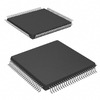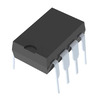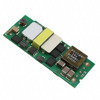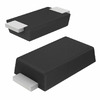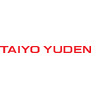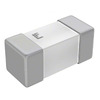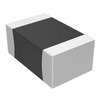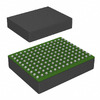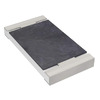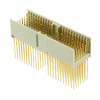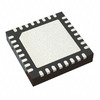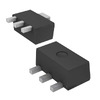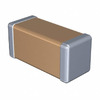HomeBlogChoosing the Right Microcontroller for Your Project: A Deep Dive into ESP32, RP2040, and STM32
Choosing the Right Microcontroller for Your Project: A Deep Dive into ESP32, RP2040, and STM32
Microcontrollers are widely used in various control electronic equipment, automation systems, military equipment, medical equipment, home appliances, and other fields. They can handle various abnormal situations during the data sampling process, ensure data accuracy and reliability, implement energy-efficient low-power consumption modes, and improve work efficiency. Today, let’s explore the differences between ESP32, RP2040, and STM32 microcontrollers to choose the most suitable chip for your project.
Catalog

What is a Microcontroller?
A microcontroller is a single-chip microcomputer that integrates the main parts of a microcomputer on a single chip. It is commonly used to control and monitor various electronic devices and systems such as automotive electronic systems, home appliances, and medical equipment. It is an integrated circuit chip composed of memory, a microprocessor, system control logic circuit, and input and output interfaces. It can implement various control tasks through programming and communicate with external devices through input and output interfaces.
ESP32 vs RP2040 vs STM32: Overview
Introduction to ESP32

ESP32 is a highly integrated low-power system-on-chip (SoC) microcontroller launched by Espressif Systems. It combines wireless communications, dual-core processors, low-power features, and rich peripherals. It is suitable for various Internet of Things applications. It's powered by a 32-bit dual-core processor, one for Wi-Fi connectivity and the other for running code. ESP32 supports Wi-Fi and Bluetooth connectivity, has 512 KB RAM, 448 KB ROM, and 34 GPIO pins.
Introduction to RP2040
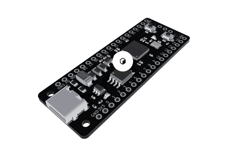
RP2040 is the Raspberry Pi's first microcontroller. It has 264KB of internal SRAM and supports up to 16MB of off-chip flash memory. Manufactured through a 40nm process node, it blends high-performance capabilities with minimal dynamic power usage and employs several low-power modes to ensure extended battery-powered operation. RP2040's compact size, energy efficiency, and impressive performance render it a fitting choice for a wide range of IoT and embedded system applications.
Introduction to STM32
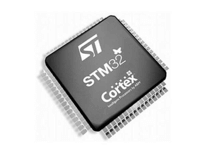
STM32 microcontroller is a 32-bit microcontroller manufactured by ST Microelectronics based on the ARM Cortex-M core and is used in embedded fields such as the Internet of Things, wireless communications, and industrial control. According to different application scenarios and characteristics, it can be divided into different series and models. Among them, the common ones include STM32F0, STM32F1, STM32F4, STM32F7, and other series.
ESP32 vs RP2040 vs STM32: Manufacturers
Manufacturer of ESP32
The ESP32 is manufactured by Espressif Systems, a global semiconductor company. Founded in 2008, it focuses on the development and design of software and hardware products in the AIoT field, including wireless communication MCU chips that are safe and stable, have excellent performance, and are cost-effective. Its main products include ESP8089 series chips, ESP8266 series chips, ESP32 series chips, ESP8266 series modules, and ESP32 series modules.
Manufacturer of RP2040
RP2040 is manufactured by the Raspberry Pi Foundation, a charitable foundation in the UK. Raspberry Pi is a card-sized development board that can run a Linux system and provides many programmable GPIOs for hardware expansion.
Manufacturer of STM32
STM32 is manufactured by ST Microelectronics, which resulted from the merger of Italy's SGS Microelectronics and France's Thomson Semiconductor. It has a wide range of product layouts in smart travel, power energy, Internet of Things, and other fields. Its product range ranges from discrete diodes and transistors to complex system-on-chip devices, to complete platform solutions, including reference designs, application software, manufacturing tools, and specifications. STMicroelectronics is a major supplier to various industrial sectors, providing a wide range of services and products to a wide range of customers.
ESP32 vs RP2040 vs STM32: Pin Configuration
Their pinout is as follows.

ESP32 vs RP2040 vs STM32: Features
Features of ESP32
- GPIO: It has 34 GPIO ports, which can connect and control various peripherals.
- WiFi and Bluetooth module: Built-in WiFi and Bluetooth 4.2 module, capable of wireless communication
- Dual-core: Most ESP32s are dual-core, they come with two Xtensa 32-bit LX6 microprocessors.
- Security: Supports security features such as encryption and digital signatures
- Low power consumption: It has multiple power-saving modes, and the lowest power consumption is only 5μA.
- High performance: It has a 240MHz dual-core processor, 520KB RAM, and 4MB flash memory.
Features of RP2040
- MicroPython is natively supported, making it convenient for users who are not very good at software to obtain open source programs from the Internet and use them flexibly according to their needs without affecting each other.
- Each pin can be programmed independently and can be used to generate various commonly used and customized protocols.
- The pins of RP2040 can be flexibly configured into groups to support the most commonly used serial buses.
- It has two Arm Cortex M0+ cores inside.
- It is manufactured by the Raspberry Pi Foundation on a 40nm TSMC silicon wafer and uses a 7×7 mm QFN-56SMD package design.
Features of STM32
- There are many types of chip models and wide coverage.
- It has built-in stack protection, memory protection, debugging and tracing protection, and other security protection functions.
- The STM32 series of microcontrollers have a wealth of peripherals, including multiple timers, ADC, DAC, counters, PWM output, communication interfaces, etc.
- It has built-in flash memory of different capacities for storing program code and data.
- It uses ARM Cortex-M core, which has excellent processing performance and running speed.
- It provides a variety of low-power modes, which can put the processor and peripherals into a low-power state to extend battery life or reduce power consumption.
ESP32 vs RP2040 vs STM32: Specifications
Specification of ESP32
- Its power supply voltage range is 2.2V-3.6V, with a built-in switching power management unit (SMU) and low-voltage regulator (LDO).
- It supports Bluetooth audio transmission (A2DP/AVRCP/SPP).
- Dual-core 32-bit LX6 microprocessor running at 160 or 240 MHz
- It supports STA/AP/STA+AP working mode, with a maximum transmission rate of 150Mbps.
- Up to 34 programmable GPIO pins for connecting sensors, actuators, and other peripherals
Specification of RP2040
- Its dimensions are 23.5 x 17.5 mm.
- USB Type-C interface for connecting power supply, data cable, and programming
- It has 30 GPIO pins, 4 of which can be used as analog inputs.
- 264kB on-chip SRAM in six independent banks
- Dual Cortex M0+ cores, up to 133 MHz (default 48MHz)
Specification of STM32
- It supports multiple communication protocols such as I2C, CAN, SPI, USART, etc.
- It usually has multiple timers and counters and can be used in various timing and control applications.
- It provides different packages such as BGA, LQFP, TSSOP, etc.
- It has a variety of pins including digital GPIO pins, ADC input pins, etc.
- Its supply voltage range is 3.3V or 5V.
ESP32 vs RP2040 vs STM32: Applications
Applications of ESP32
- Smart home system
- Drone and robot control
- Sensor data collection and monitoring
- Health tracking and medical devices
- IoT devices and applications
- Industrial automation and embedded control
Applications of RP2040
- Smart home
- Medical equipment
- IoT devices
- Embedded audio and video
Applications of STM32
- Communication
- Aerospace
- Medical equipment
- Vehicle electronics
- Automated industry
Conclusion
In addition to the above, we can learn that there are some differences between ESP32, RP2040, and STM32 in terms of I/O, price, and clock frequency.
Initially, with regard to I/O, RP2040 boasts a relatively modest number of ports, while both ESP32 and STM32 provide support for a greater array of ports and peripherals. Secondly, concerning pricing, RP2040 offers a more budget-friendly option compared to ESP32 and STM32. Lastly, in terms of clock frequencies, ESP32 utilizes a 32-bit processor with a clock speed of up to 240MHz, while STM32 typically operates within the range of 72MHz to 180MHz. RP2040, on the other hand, utilizes a 16-bit processor with a clock speed that can reach up to 133MHz.
Therefore, we need to comprehensively consider factors such as performance, price, application scenarios, etc., and choose the appropriate microprocessor according to our own needs.
Frequently Asked Questions [FAQ]
1. What is the application of RP2040?
Four RP2040 IO are used for internal functions - driving an LED, on-board Switched Mode Power Supply (SMPS) power control, and sensing the system voltages.
2. Does RP2040 have ADC?
The RP2040 has an internal SAR (Successive Approximation Register) ADC. The ADC uses an independent 48MHz clock, and a sample takes 96 cycles of this clock to complete (2us). A pacing timer can be used to reduce the speed with which samples are gathered (but any individual conversion always takes 96 cycles).
3. What is STM32 used for?
STM32 microcontrollers play a vital role in various industries. In the automotive industry, they are used for engine control, safety systems, infotainment systems, and more. In consumer electronics, STM32 microcontrollers power devices such as smartphones, tablets, smartwatches, and home automation systems.
4. Is ESP32 better than STM32?
Both are good for their features. ESP32 gives you Wifi feature where STM32 Nucleo you don't have inbuilt. and Nucleo STM32 is an ARM CORTEX -Mx based have good market.
5. What does an ESP32 do?
ESP32 can perform as a complete standalone system or as a slave device to a host MCU, reducing communication stack overhead on the main application processor. ESP32 can interface with other systems to provide Wi-Fi and Bluetooth functionality through its SPI / SDIO or I2C / UART interfaces.
About us
ALLELCO LIMITED
Read more
Quick inquiry
Please send an inquiry, we will respond immediately.
→ Previous

The 2N3904 is a commonly used transistor that is widely used in electronic circuits for a variety of applications. To make better use of it, in this article, we will explore the physical structure of the 2N3904 transistor, learn about its replacement models, features, technical parameters and pin co...

In the world of portable power sources, the CR2430 and CR2450 lithium coin batteries stand out for their remarkable capabilities and adaptability. These batteries, engineered with lithium manganese dioxide technology, offer distinct advantages in terms of energy density, reliability, and environment...
→ Next

Harnessing the Power of the 2N3904 Transistor for Effective Circuit Design
on April 29th

CR2430 VS CR2450 Battery: Size, Battery Characteristics, Applications
on April 29th
Popular Posts
-

What is GND in the circuit?
on January 1th 2937
-

RJ-45 Connector Guide: RJ-45 Connector Color Codes, Wiring Schemes, R-J45 Applications, RJ-45 Datasheets
on January 1th 2498
-

Fiber Connector Types: SC Vs LC And LC Vs MTP
on January 1th 2089
-

Understanding Power Supply Voltages in Electronics VCC, VDD, VEE, VSS, and GND
on November 9th 1888
-

Comparison Between DB9 and RS232
on January 1th 1761
-

What Is An LR44 Battery?
Electricity, that ubiquitous force, quietly permeates every aspect of our daily lives, from trivial gadgets to life-threatening medical equipment, it plays a silent role. However, truly grasping this energy, especially how to store and efficiently output it, is no easy task. It is against this background that this article will focus on a type of coin cell battery that may seem insignificant on the...on January 1th 1712
-

Understanding the Fundamentals:Inductance Resistance, andCapacitance
In the intricate dance of electrical engineering, a trio of fundamental elements takes center stage: inductance, resistance, and capacitance. Each bears unique traits that dictate the dynamic rhythms of electronic circuits. Here, we embark on a journey to decipher the complexities of these components, to uncover their distinct roles and practical uses within the vast electrical orchestra. Inductan...on January 1th 1651
-

CR2430 Battery Comprehensive Guide: Specifications, Applications and Comparison to CR2032 Batteries
What is CR2430 battery ?Benefits of CR2430 BatteriesNormCR2430 Battery ApplicationsCR2430 EquivalentCR2430 VS CR2032Battery CR2430 SizeWhat to look for when buying the CR2430 and equivalentsData Sheet PDFFrequently Asked Questions Batteries are the heart of small electronic devices. Among the many types available, coin cells play a crucial role, commonly found in calculators, remote controls, and ...on January 1th 1548
-

What Is RF and Why Do We Use It?
Radio Frequency (RF) technology is a key part of modern wireless communication, enabling data transmission over long distances without physical connections. This article delves into the basics of RF, explaining how electromagnetic radiation (EMR) makes RF communication possible. We will explore the principles of EMR, the creation and control of RF signals, and their wide-ranging uses. The article ...on January 1th 1537
-

CR2450 vs CR2032: Can The Battery Be Used Instead?
Lithium manganese batteries do have some similarities with other lithium batteries. High energy density and long service life are the characteristics they have in common. This kind of battery has won the trust and favor of many consumers because of its unique safety. Expensive tech gadgets? Small appliances in our homes? Look around and you'll see them everywhere. Among these many lithium-manganes...on January 1th 1506



